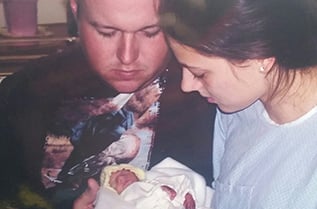This panel includes measurement of 3 enzymes.
10 days
82657x2
$400
Mucolipidosis II (ML II), also known as I-Cell disease, and Mucolipidosis IIIA (ML IIIA), also known as Pseudo-Hurler Polydystrophy, are lysosomal storage disorders caused by a deficiency of N-acetylglucosamine-1-phosphotransferase (NAPT). ML II is associated with a more severe course including growth failure and failure to thrive, severe developmental delay, coarse facial features, skeletal anomalies and frequent upper respiratory infections. ML II is often lethal in childhood. ML IIIA is associated with a similar, but milder course with a wider spectrum of features and severity. In ML II and ML IIIA, lysosomal hydrolase enzymes are not properly targeted to the lysosome. Therefore, the enzyme activity of multiple lysosomal hydrolases is increased in plasma and other body fluids.
The activity of 4 lysosomal hydrolases are measured from a dried blood spot. The assay uses 4-methylumbelliferyl substrates to measure the activities of acid sphingomyelinase, alpha-iduronidase, beta-glucosidase, and alpha-mannosidase. Prenatal diagnosis and carrier testing via enzyme analysis are not available.
Enzyme activity can be measured in dried blood spots. For dried blood spot collection, a minimum of three circles need to be filled in. Each circle should contain one drop of blood (about 100 microliters). See the link below for additional sample collection and handling instructions.
For a dried blood spot: When the sample has dried 3-4 hours, fold cover at score line, over sample, and tuck into flap. Send at ambient temperature.
Call our laboratory at 1-800-473-9411 or contact one of our Laboratory Genetic Counselors for assistance.
Robin Fletcher, MS, CGC
Falecia Thomas, MS, CGC
Alex Finley, MS, CGC
